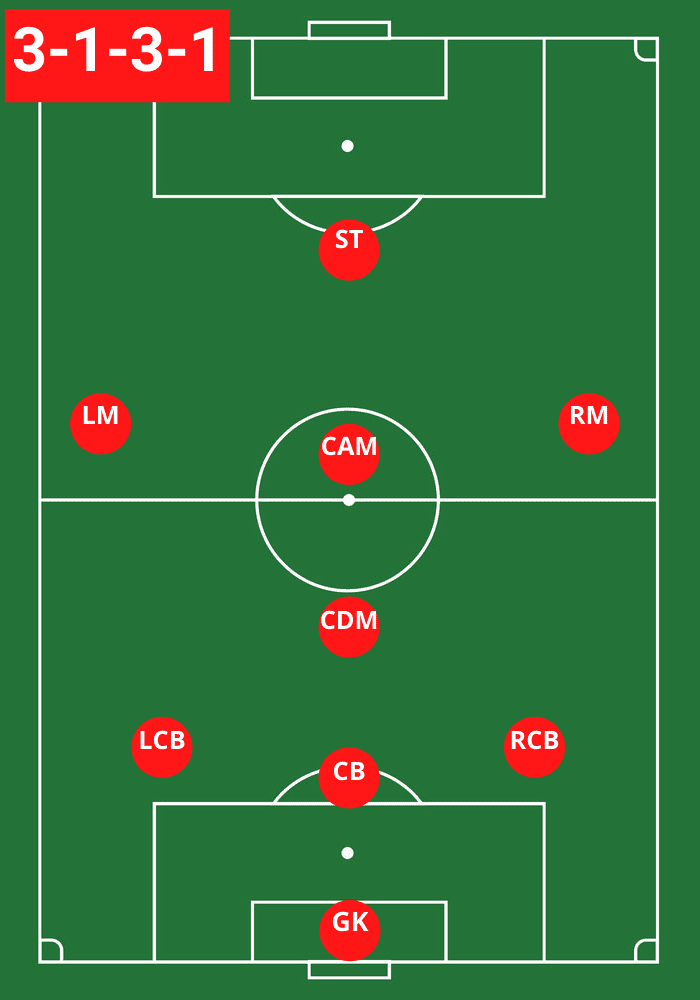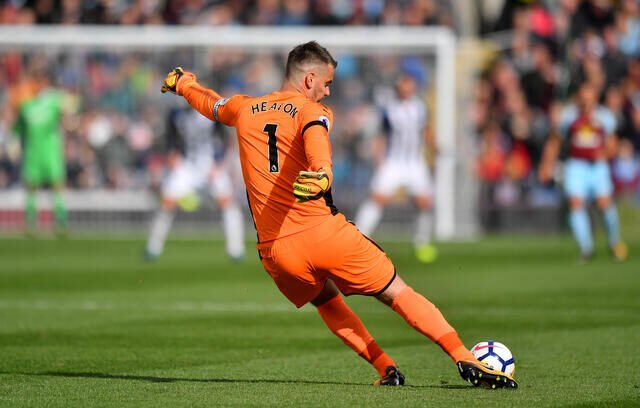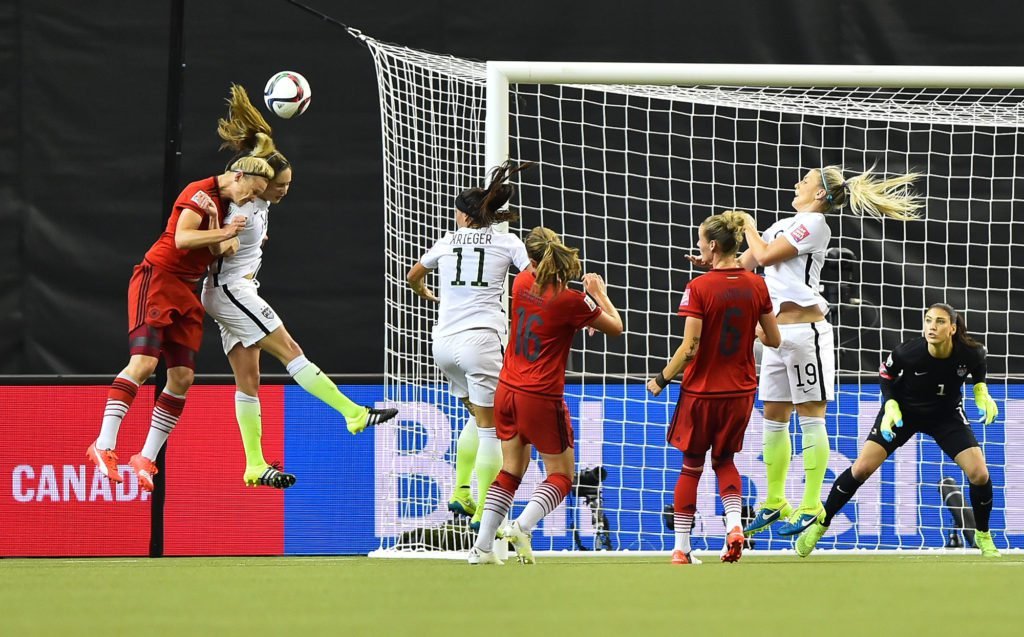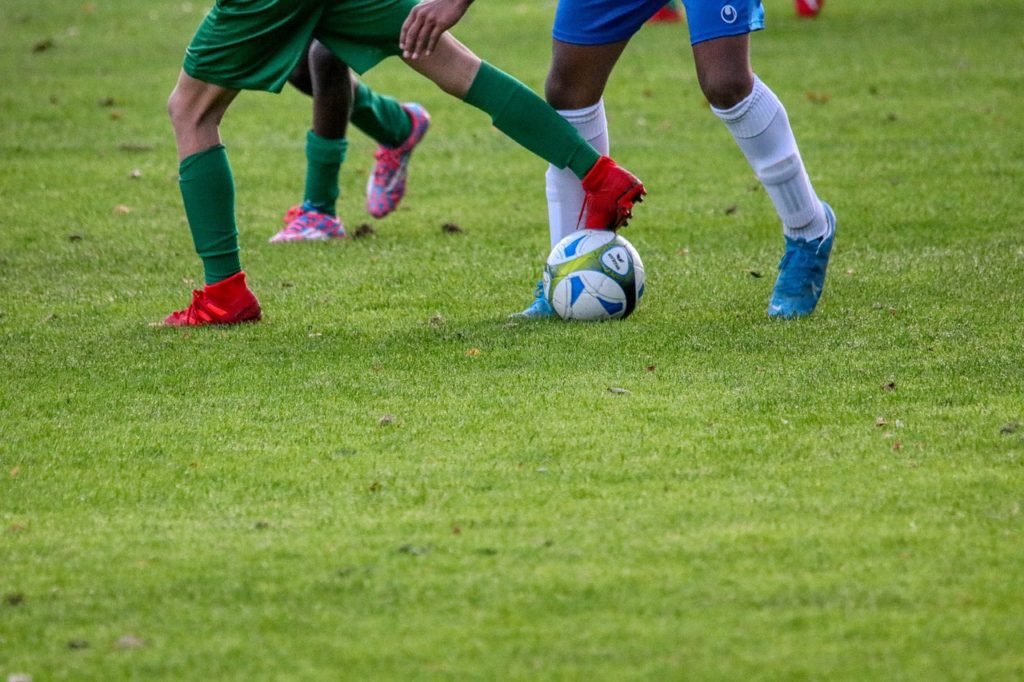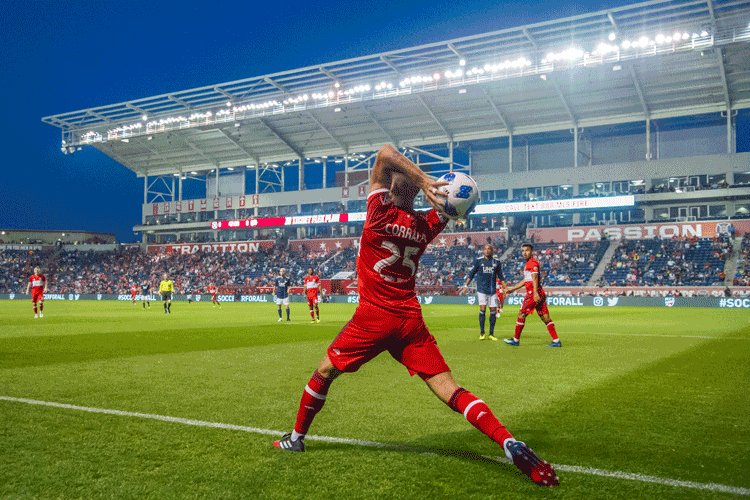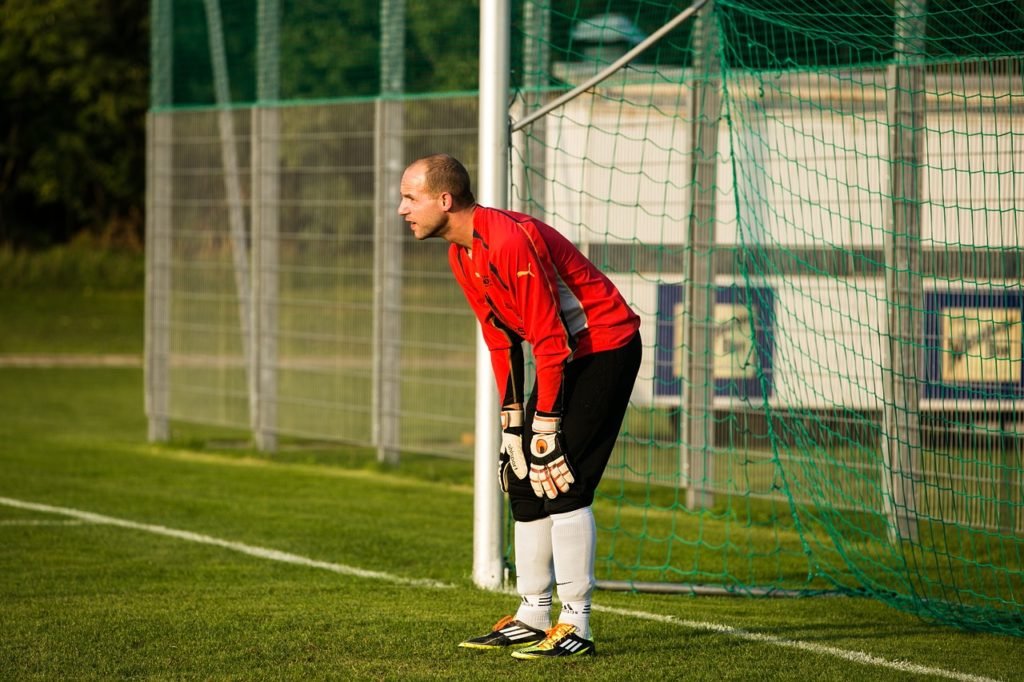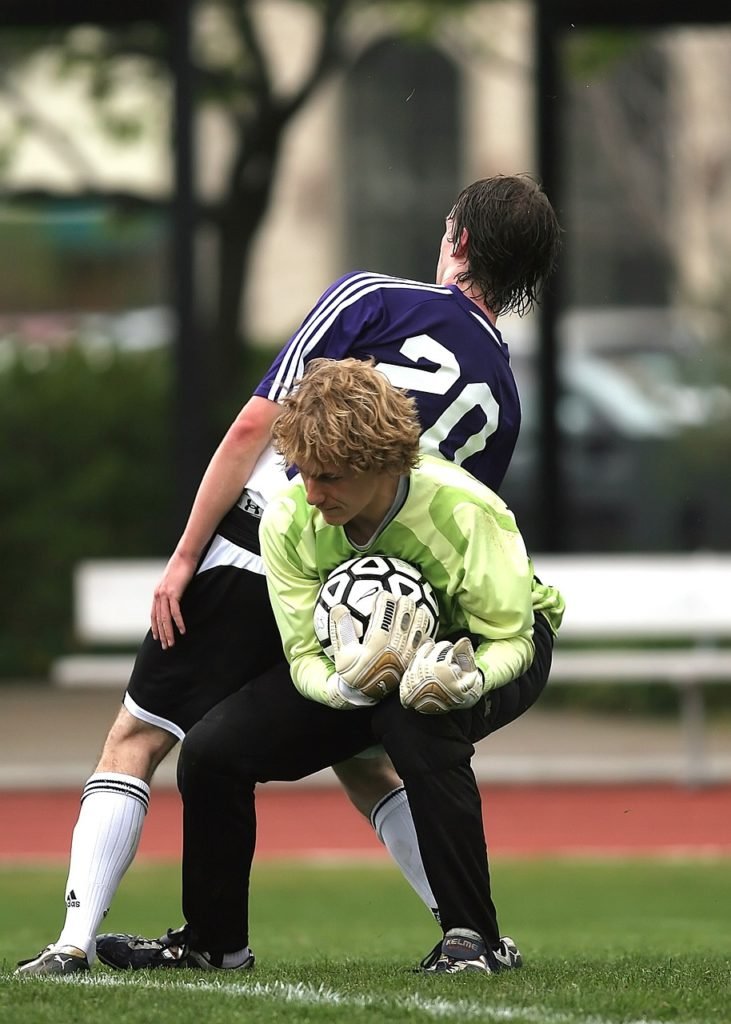Playing the # 9 soccer position, forward or Striker, is a crucial position that requires a unique blend of technical, physical, and mental skills. Forwards are responsible for scoring goals and creating scoring opportunities for their team. Whether you’re a beginner or an experienced player, here are some tips and strategies for playing forward in soccer.
Soccer Positions
Center Back in soccer is the # 4 Position, also known as the defender position, is a crucial role in any team’s defense. The center back is responsible for organizing the defense, marking opposing players, and making tackles to win the ball back for their team
As soccer players try to gain control of the game, midfielders are essential – and this guide is all you need to become a master! Get the tips you need today!
Mastering the Midfield Is The Key To Winning In Soccer Read More »
9v9 soccer, also known as small-sided soccer, is a variation of the traditional 11v11 game where teams are reduced to nine players each on the field at one time. This type of soccer is primarily played in youth leagues, with U9 to U13 age groups being the most common.
Soccer is governed by a set of rules known as the Laws of the Game. These laws provide structure and fairness to the sport, ensuring that matches unfold with integrity and adherence to a shared code of conduct.
Every aspect of play is meticulously outlined in these laws, from how goals are scored to the punishment for fouls committed on the field. In this comprehensive article, we will delve into one specific law: Law 16 – The Goal Kick.
A goal kick serves as a crucial component in restarting play from the goal area after an attacking team fails to score or sends the ball out of bounds over their opponents’ goal line. Understanding this rule is vital not only for players but also for coaches, referees, and avid spectators who seek a deeper comprehension of soccer’s intricacies.
The Growing Concern for Player Safety in Soccer
Soccer, a beloved sport played and watched by millions around the globe, has been grappling with a growing concern: player safety. The physical nature of the game, with its high-speed collisions, aerial challenges, and competitive tackles, puts players at risk of sustaining various injuries.
Among these concerns, concussions have emerged as a significant issue that cannot be taken lightly. Concussions, often resulting from head clashes or blows to the head during matches, are traumatic brain injuries that can have serious long-term consequences if not managed properly.
The potential risks associated with concussions range from cognitive impairment to an increased likelihood of developing neurodegenerative diseases later in life. With a heightened awareness and an increasing body of research highlighting the long-term impact on players’ health and well-being, soccer’s governing bodies are under pressure to prioritize player safety.
Concussion Substitutions in Soccer: evolving concussion protocols Read More »
Traditional Refereeing Methods: Balancing Act on the Pitch
In the realm of soccer, referees have always been the authoritative figures entrusted with the task of maintaining order on the pitch. They rely on their eyesight, experience, and intuition to make crucial decisions in real time.
However, this traditional approach to refereeing is not without its challenges. With players moving at lightning speed and matches played in high-pressure situations, it’s no wonder that referees occasionally make errors or miss crucial incidents.
Their limited field of vision often leaves them susceptible to human fallibility. Referees are expected to keep track of a multitude of factors simultaneously – from offside positions to potential fouls or handballs.
The fast-paced nature of soccer sometimes results in split-second decisions that can have long-lasting consequences for teams and players alike. Moreover, acting as both judge and executioner adds immense pressure to their role as they must make snap judgments that impact the flow and outcome of a match.
The Impact of VAR on Modern Soccer: Video Assistant Referee Read More »
Definition of ‘Inverted Wingers’ in soccer
An inverted winger, also known as an inside forward or an inverted forward, is a player who operates on the opposite side of their natural foot. In simpler terms, if a right-footed player is deployed on the left flank or vice versa, they are considered an inverted winger.
This positioning allows them to cut inside towards the central areas rather than hugging the touchline like traditional wingers. What sets inverted wingers apart from their traditional counterparts is their intent to drift infield and wreak havoc within congested central spaces.
They look to exploit gaps between defenders and midfielders rather than rely solely on delivering crosses from wide areas. This crafty tactical approach challenges defenses by forcing them to adapt and adjust their shape accordingly.
The Changing Role of Wingers in Soccer.
Soccer has captivated millions around the world for decades. It is a sport that has undergone significant evolution, both in terms of its rules and tactical approaches. From its humble beginnings on muddy fields to the grandeur of modern stadiums, soccer has transformed into a global phenomenon that mesmerizes fans with its artistry and excitement.
Throughout this transformation, various positions within the game have evolved alongside it. One such position that has seen remarkable changes is that of the winger.
Wingers are players who traditionally operate on either flank of the pitch, positioned between the midfielders and full-backs. Their role has been crucial in shaping a team’s attacking dynamics throughout soccer’s history.
The Transformation of Midfield Roles in Soccer
The Evolution of Soccer Tactics
Soccer, once a game characterized by simplicity and brute force, has evolved into a tactical labyrinth. Gone are the days when teams relied solely on physicality and raw skill to triumph on the pitch. The beautiful game has experienced a profound shift, as managers and coaches now meticulously devise strategies to gain an upper hand over their opponents.
The evolution of soccer tactics has given rise to a new era of innovation and sophistication. Gone are the times when teams would deploy traditional formations like 4-4-2 or 4-3-3 without much thought behind them.
Nowadays, every aspect of the game is analyzed down to its minutest detail: from player positioning to passing patterns, from defensive shape to attacking movements. Coaches have become veritable chess masters, moving their pieces across the pitch with calculated precision.
The Transformation of Midfielders Roles in Soccer Read More »
Ah, the beautiful game of soccer! A sport that has captivated millions around the world with its mesmerizing displays of skill, passion, and sheer athleticism.
From the historic rivalries between powerhouses to the underdog stories that defy all odds, soccer has a way of touching our hearts and igniting our spirits like no other. But what makes this game so special?
What sets it apart from other sports? It is undoubtedly the dynamic nature of soccer that keeps us all hooked.
Unlike some other sports where rigid positions define players’ roles, soccer thrives on fluidity and adaptability. Players are not confined to specific zones or limited by prescribed movements; they roam the pitch like artists on a canvas, expressing themselves through their actions.
Each match is a symphony in motion – a ballet of passes, tackles, runs, and goals. And in this ever-changing landscape lies the essence of why versatile players hold immense importance.
Versatile Soccer Players: Chameleons of the Pitch Read More »
The Changing Role of Strikers in Modern Soccer
Soccer, known as the beautiful game, has always had a place for the goal-scoring heroes upfront, commonly known as strikers. These players were once seen as mere finishers, waiting inside the penalty box to pounce on opportunities presented by their teammates.
The traditional role of strikers revolved around putting the ball into the back of the net with ruthless efficiency. However, as soccer has evolved, so too has the role and responsibilities of these attacking maestros. Brief Overview of Traditional Role:
In the early days of soccer, strikers were primarily expected to be lethal goal poachers. Their main objective was to position themselves in scoring positions within or near the penalty area and convert any chances that came their way.
These sharpshooters were celebrated for their ability to find space among defenders and deliver clinical finishes with precision and finesse. It was a simpler time when goalscoring was considered their sole purpose. Transition to Modern Game and Changing Demands:
Brief Overview: Soccer as a Popular Sport Worldwide
Soccer’s popularity stems from its accessibility, simplicity, and universal appeal. It has woven itself into the tapestry of numerous societies around the globe, captivating hearts with its blend of skillful technique, strategic prowess, teamwork, and sheer passion. From Brazil’s samba style to Spain’s tiki-taka passing game or Germany’s disciplined efficiency – each nation contributes to soccer’s rich tapestry through their distinctive playing styles.
The sport’s prominence can be witnessed in international tournaments such as the FIFA World Cup or UEFA Champions League where nations compete fiercely to secure glory on a global stage. The camaraderie formed within fan bases further solidify soccer as more than just a game; it becomes an emblem that unifies cultures under one banner – united by their shared love for this enthralling sport.
Moreover, soccer serves not only as entertainment but also as an economic powerhouse driving immense revenue through merchandise sales, broadcasting rights deals, sponsorship agreements, and ticket sales. Stadiums fill with passionate supporters who create an electrifying atmosphere that can stir raw emotions, forming an indelible bond between players, fans, and the game itself.
The Crucial Role of a Soccer Referee
In the vast realm of soccer, where skill, strategy, and passion collide in a captivating display, there exists a figure whose presence often goes unnoticed amidst the adrenaline-fueled chaos—the referee. Although frequently overlooked by spectators and players alike, the role of a soccer referee is nothing short of crucial in ensuring fair play and upholding the integrity of the game.
Before each match kicks off, soccer referees diligently prepare themselves for the challenges that lie ahead. Their pre-game responsibilities encompass studying and familiarizing themselves with the Laws of the Game—a comprehensive set of regulations that govern every aspect of play.
From corners to throw-ins, player positions to free kicks, these laws serve as their guiding light throughout each match. But it’s not just about knowing the rules; soccer referees orchestrate much more than simple rule enforcement.
They are tasked with maintaining an environment where fair play prevails and sportsmanship reigns supreme. A critical aspect of their job is to act as guardians of fair competition—ensuring that players adhere to both the letter and spirit of those laws that define this beautiful sport.
Law Number 15 – Throw Ins
A throw-in in soccer is granted to the team opposing the player who last made contact with the ball, causing it to cross the touchline completely, whether on the ground or in the air. It’s important to note that a goal cannot be directly scored from a throw-in.
If the ball enters the opponents’ goal, a goal kick is awarded, while if it enters the thrower’s goal, a corner kick is awarded.
The procedure for a throw-in is as follows:
The player executing the throw-in, or the thrower, must face the field of play.
The thrower must have part of each foot either on the touchline or on the ground outside the touchline.
The thrower must use both hands to deliver the ball from behind and over the head, from the point where the ball left the field of play.
All opponents must maintain a minimum distance of 2 meters (or 2 yards) from the point on the touchline where the throw-in is to be taken.
The ball is considered in play once it enters the field of play. If it touches the ground before entering, the throw-in is retaken by the same team from the same position. If the throw-in is not executed correctly, it is retaken by the opposing team.
A player can deliberately throw the ball at an opponent to play the ball again, provided it’s not done in a careless, reckless manner, or with excessive force. In such a case, the referee allows play to continue. However, the thrower is not allowed to touch the ball again until it has made contact with another player.
Offences and sanctions during a throw-in include:
If the thrower touches the ball again before it has made contact with another player, an indirect free kick is awarded. If the thrower commits a handball offence, a direct free kick is awarded. If the offence occurred inside the thrower’s penalty area, a penalty kick is awarded unless the ball was handled by the defending team’s goalkeeper, in which case an indirect free kick is awarded.
An opponent who unfairly distracts or impedes the thrower, including moving closer than 2 meters (or 2 yards) to the place where the throw-in is to be taken, is cautioned for unsporting behavior. If the throw-in has been taken, an indirect free kick is awarded.
For any other offence, the throw-in is taken by a player of the opposing team.
Brief History of Soccer
Soccer has been played in various forms throughout history with records dating back as far as 2500 BC in Ancient China where they played a game called Cuju which means “kickball”. Over time, different variations of ball games began to emerge across Europe during the Middle Ages. It wasn’t until 1863 that England established rules for Association Football which became known as modern-day soccer.
The first official international match was played between Scotland and England on November 30th, 1872 at West of Scotland Cricket Club’s ground at Hamilton Crescent in Glasgow where it ended in a 0-0 draw. Since then soccer has grown exponentially becoming one of the most popular sports worldwide with major tournaments such as the FIFA World Cup drawing billions of viewers each tournament.
Soccer is a unique sport that requires a combination of physical strength and technical prowess. While speed is important in soccer, it is not the end-all-be-all factor that determines success on the field. Slower players can still excel in this sport if they have the right skills, soccer IQ, and tactical understanding.
One key factor in a player’s success on the soccer field is positioning. Knowing where to be on the field at any given time can give players an advantage over their opponents.
This is especially important for slower players who may not have the speed to outrun their opponents. By being in the right place at the right time, slower players can intercept passes, block shots, and make crucial plays that can turn the game in their team’s favor.
Another important aspect of soccer strategy for slower players is ball control. Slower players may not be able to outrun their opponents, but they can compensate for this by having excellent ball control skills.
What is a set piece in soccer?
Introduction
Soccer is a sport that requires both individual and team skills. A slice of its teamwork comes in the form of set pieces – an integral part of the game.
Set pieces in soccer are moments when play stops, and the ball is restarted under specific conditions. Whether it’s a free kick, corner kick, or throw-in, set pieces provide teams with a chance to strategize and execute pre-planned moves that can often lead to crucial goals.
Definition of a Set Piece in Soccer
A set piece in soccer is any restart where play stops and starts again under specific conditions. The game restarts after an infringement has occurred – like a foul or ball going out of bounds – giving the opposing team a chance to score or create potential goal-scoring opportunities. Free kicks, corner kicks, and throw-ins are all examples of set pieces.
Set pieces provide tactical opportunities for teams – they offer scenarios where it’s possible to execute pre-planned moves for either defensive or attacking purposes. Teams prepare for these moments by developing strategies that aim to take advantage of their opponent’s weaknesses while minimizing their own vulnerabilities.
The Importance Of Mastering Tackling Skills For Success In Soccer
To succeed in soccer, it is essential to master tackling skills. Good defenders are critical to a team’s success as they form a solid barrier against the opposition’s attacks.
Effective tackling can also create opportunities for counter-attacks by giving your team possession of the ball. By learning proper body positioning, timing, and anticipation, you can tackle safely without injuring yourself or others.
Remember that tackling is not just about physical strength; it involves mental agility as well. With practice and dedication, anyone can become an excellent tackler in soccer.
Don’t be afraid to make mistakes; they are all part of the learning process. So go out there on the field and start improving your tackling skills today!
The Importance of Keeping a Clean Sheet: An Introduction to Soccer’s Most Coveted Record
Soccer is a sport that is as much about defending as it is about attacking. While scoring goals is undoubtedly the most exciting aspect of the game, defenders and goalkeepers play a crucial role in ensuring their team doesn’t concede any goals. One way of measuring this defensive effort is through the record known as a “clean sheet.”
A clean sheet refers to when a team has successfully prevented their opponents from scoring in an entire match. It’s a term that’s commonly used in soccer and one that holds significant importance for goalkeepers and teams alike.
A clean sheet can be seen as the ultimate form of defensive brilliance, where not even one goal slips past the keeper and into the back of the net. It’s important to note that keeping a clean sheet isn’t just about individual performances; it’s also about teamwork and discipline.



